Introduction
La mini chargeuse compacte est un outil compact mais puissant conçu pour améliorer la productivité dans un large éventail de tâches dans les domaines de l'aménagement paysager, de la construction et de l'agriculture. Cette machine polyvalente peut transformer la manière de gérer les projets de petite et moyenne taille, à condition qu’elle soit utilisée efficacement. Ce blog vise à explorer diverses stratégies et conseils pour maximiser les performances et l’efficacité de votre mini chargeuse compacte.
Understanding Your Mini chargeuse compacte

When it comes to maximizing the efficiency of your mini skid steer loader, a deep understanding of its capabilities, limitations, and features is crucial. This compact equipment is incredibly versatile and designed to perform a variety of tasks in limited space environments. By familiarizing yourself with the various aspects of your mini skid steer loader, you can ensure that you are using it to its fullest potential, thereby increasing productivity and reducing operational costs. Here are some key elements to consider:
Puissance et performances du moteur
The engine is the heart of the mini skid steer loader, and its power output directly impacts the machine’s performance. Engine power, typically measured in horsepower (HP), determines how heavy a load the loader can handle and how efficiently it can perform tasks such as digging, lifting, and grading. Higher horsepower is beneficial for more demanding tasks, but it also means higher fuel consumption.
- La consommation de carburant: Look for engines that offer a balance between power and fuel efficiency to keep operating costs low.
- Torque Specifications: Torque affects the loader’s ability to start under load and the overall stability during operation. Understanding torque dynamics can help you better match the loader to job requirements.
Hydraulic System Capabilities
The hydraulic system of a mini skid steer loader plays a pivotal role in its functionality. It powers the movement of the arms and any attachments, influencing both the speed and strength of these components.
- Débit: The hydraulic flow rate, usually measured in gallons per minute (GPM), dictates how quickly the loader can complete hydraulic-dependent tasks. A higher flow rate can significantly speed up operations.
- Pressure Ratings: Knowing the pressure ratings of your system is essential for maintaining the integrity of hydraulic components and avoiding overloads.
Attachments and Adaptability
One of the biggest advantages of mini skid steer loaders is their adaptability, thanks to a wide range of attachments available. Each attachment can transform your loader for different tasks, from earthmoving and landscaping to road repair and construction.
- Quick Attach System: Most mini skid steers come with a quick attach system, which allows for fast and easy switching between different attachments. Familiarizing yourself with this system can greatly reduce downtime between tasks.
- Polyvalence des accessoires: Understanding which attachments are compatible with your loader and how they affect its balance and operation is key. Common attachments include buckets, forks, augers, and trenchers, each designed for specific tasks.
Operational Ergonomics and Safety Features
The design and ergonomics of your mini skid steer loader are also important. Comfortable and intuitive controls not only improve operator efficiency but also reduce fatigue during long hours of operation.
- Système de contrôle: Whether it’s joystick, pedal, or lever controls, being adept at using your loader’s control system can improve maneuverability and precision in tasks.
- Des dispositifs de sécurité: Safety must always be a priority. Features like rollover protection structures (ROPS), seat belts, and emergency shut-offs are essential for protecting the operator.
Manufacturer Support and Training
Lastly, leveraging manufacturer support and training can be incredibly beneficial. Many manufacturers offer detailed manuals and customer support services, which can help you troubleshoot issues and maintain your loader effectively.
- Operational Training: Some manufacturers provide training sessions. These can be invaluable in helping new operators understand the full capabilities and safe operation of the mini skid steer loader.
- Warranty and Service: Understanding the warranty and what it covers can help manage maintenance costs. Regular service check-ups can prevent major repairs and extend the life of your loader.
Optimizing Operation Techniques
Efficient operation of your mini skid steer loader is crucial not only for the productivity of your projects but also for extending the lifespan of the machine. Here are detailed strategies and tips to optimize the way you operate your mini skid steer to ensure maximum efficiency and safety.
Contrôles avant l'opération
Performing thorough pre-operation checks is essential to prevent mechanical failures and ensure the loader operates smoothly throughout the day.
- Niveaux de liquide: Check the oil, hydraulic fluid, and coolant levels to ensure they are within the recommended ranges. Low levels can lead to mechanical failures and overheating.
- Tire Pressure and Treads: Ensure the tires are properly inflated and the treads are not overly worn. Proper tire pressure and good treads provide better traction and stability, which improve safety and efficiency.
- Attachment Inspections: Examine attachments for any signs of wear or damage before use. Ensure they are securely connected.
Techniques d'exploitation pour l'efficacité
The way you operate the mini skid steer loader can significantly affect its efficiency and wear. Here are some operating techniques that can help:
- Fonctionnement fluide: Avoid abrupt starts and stops and operate the loader at a steady pace. This reduces the stress on the mechanical parts and can lead to less wear and tear over time.
- Efficient Path Planning: Plan your work area and path efficiently to minimize the distance traveled with or without loads. This saves time and reduces fuel consumption.
- Balanced Loading: Always load materials evenly and within the capacity limits of the loader. Overloading can strain the engine and hydraulic systems and increase the risk of tipping.
- Skillful Maneuvering: Learn to maneuver the loader skillfully to reduce the time taken to complete tasks. Practice makes perfect; efficient maneuvering comes with experience and can significantly cut down on operation time.
Utilizing High and Low Gears Appropriately
Understanding when to use high and low gears can enhance the operational efficiency of your mini skid steer loader.
- High Gear: Use high gear for tasks that require less power but greater speed, such as transporting materials over flat surfaces.
- Low Gear: For tasks that require more power and torque, such as digging or climbing, low gear is more appropriate. It provides the necessary power while protecting the engine from stress.
Ergonomic Operation
Ensuring that the operation is ergonomic not only enhances efficiency but also keeps the operator comfortable and safe, reducing the risk of injury.
- Adjustable Controls: Make sure that the seat, levers, and controls are adjusted to the operator’s comfort. This can reduce fatigue and increase operational precision.
- Regular Breaks: Take regular breaks to prevent operator fatigue. A rested operator is more alert and efficient.
Monitoring and Adjusting as Necessary
Continuous monitoring and adjusting of your operating techniques can lead to ongoing improvements in efficiency.
- Performance Tracking: Keep track of performance metrics such as fuel consumption and time spent on tasks. Analyzing this data can help identify areas for improvement.
- Feedback Loop: Encourage operators to provide feedback on the operation and handling of the loader. Use this feedback to make adjustments and improve techniques.
Maintenance Best Practices
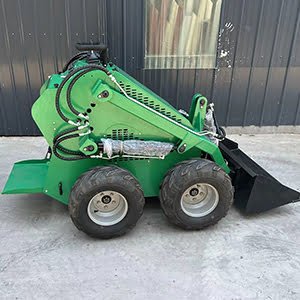
Regular and proactive maintenance is vital to keep your mini skid steer loader operating at peak performance and to minimize downtime. Here’s a comprehensive guide to establishing a robust maintenance routine that ensures your loader remains reliable and efficient over its operational lifespan.
Inspections régulières
Daily and weekly inspections are crucial to catch potential issues before they lead to significant problems or equipment failure.
- Daily Checks: Every day before operation, inspect the loader for any signs of wear or damage. Check for fluid leaks, damaged or worn parts, and ensure that all fasteners are tight. Verify that the lights and safety features are working properly.
- Weekly Inspections: Perform more thorough checks weekly. This includes checking the battery condition, cleaning filters, and inspecting the hydraulic hoses and connections for signs of wear or leaks.
Entretien programmé
Adhering to the manufacturer’s recommended service intervals is critical. These services are designed to ensure all critical systems are checked and maintained regularly.
- Engine and Hydraulic Service: Include oil changes, filter replacements, and hydraulic fluid replacements at intervals suggested by the manufacturer.
- Système de refroidissement: Check the radiator and clean debris from the air intakes to prevent overheating, which is crucial especially in high-load operations.
Preventive Maintenance
Preventive maintenance involves addressing potential problems before they occur.
- Lubrification: Regularly lubricate moving parts to reduce friction and wear. This includes the loader’s joints and bearings. Use the type and frequency of lubrication recommended by the manufacturer.
- Entretien des pneus: Check and maintain tire pressure regularly. Rotate tires and replace them when the tread wear indicates it is necessary to ensure optimal traction and load distribution.
- ajustements saisonniers: Prepare your loader for seasonal changes, especially if operating in regions with extreme weather. This might involve changing the type of hydraulic fluid or engine oil to suit temperature changes.
Tenue de registres
Keeping detailed records of all maintenance activities can help track the health of your equipment and prove invaluable in diagnosing future problems.
- Journaux de maintenance: Maintain a log of all maintenance and repair activities, including dates, details of the service, parts replaced, and observations noted during servicing.
- Hours of Operation: Monitor and record the operating hours to schedule preventive maintenance and services accurately.
Propreté
Keeping your mini skid steer loader clean is not just about aesthetics; it plays a critical role in its operation and longevity.
- Nettoyage régulier: Wash the loader regularly to remove dirt, mud, and debris, which can lead to rust or clog cooling systems.
- After-Use Cleaning: After each use, especially in dusty or muddy conditions, clean out the undercarriage and other areas where material can accumulate.
Training for Maintenance
Ensuring that all operators and maintenance personnel are properly trained can greatly affect the effectiveness of your maintenance program.
- Formation des opérateurs: Train operators to perform daily checks and identify signs of wear or potential issues. An informed operator is your first line of defense against major mechanical failures.
- Maintenance Staff Training: Skilled maintenance personnel should understand the intricacies of the hydraulic, electrical, and mechanical systems of your mini skid steer loader to perform effective repairs and maintenance.
Implementing these maintenance best practices will not only extend the operational life of your mini skid steer loader but also enhance its performance and reliability. Regular and diligent maintenance is a small investment that pays big dividends in the form of reduced repair costs, minimized downtime, and improved efficiency.
Améliorer l'efficacité avec les bons accessoires
The versatility of the mini skid steer loader can be significantly enhanced by using the right attachments for specific tasks. Below is a table comparing various attachments and their uses to help you choose the right tools for your projects:
| Pièce jointe | Use Case | Avantage |
|---|---|---|
| Seau | General digging and excavation | Versatile for multiple types of material |
| Fourches | Manutention de matériaux | Ideal for pallets and equipment moving |
| Tarière | Drilling holes for posts | Efficient for fencing and planting |
| Trancheuse | Creating narrow trenches | Perfect for piping and electrical cables |
| Brush Cutter | Clearing land and undergrowth | Effective for landscaping and clearing |
FAQ
Q: How often should I service my mini skid steer loader?
A: It’s best to follow the manufacturer’s guidelines, generally after every 100 to 200 operating hours.
Q: Can I use any attachment with my mini chargeuse compacte?
A: While many attachments are interchangeable, always check compatibility with your model to ensure safe and effective operation.
Q: What should I do if my mini chargeuse compacte starts overheating?
A: Stop the machine, let it cool down, and check if there are any blockages or leaks. Consult a professional if the problem persists.
Conclusion
A mini skid steer loader is a potent tool that can significantly increase efficiency when used correctly. By understanding your machine, optimizing operation techniques, performing regular maintenance, and choosing the right attachments, you can ensure that your mini skid steer loader is a valuable asset in your project arsenal. Remember, the key to maximizing efficiency lies in thorough knowledge and proper care of your equipment.

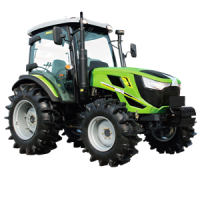
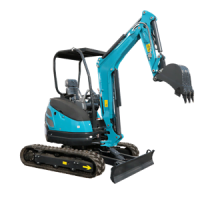
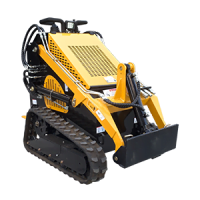
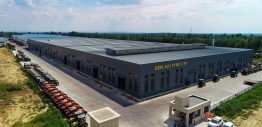
-1.png)